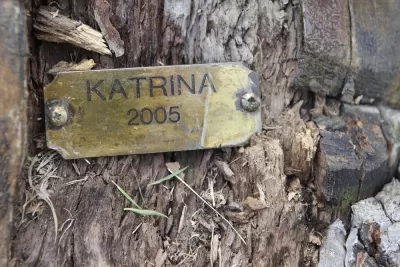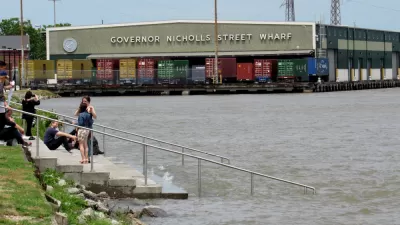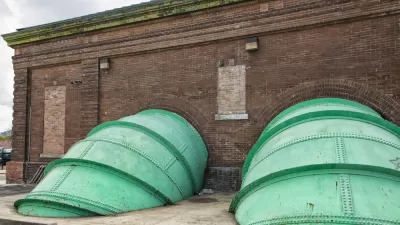In an underreported fact, it has rained every day since April 1 in New Orleans this year. The city is struggling to deploy stormwater infrastructure, however, and flooding overwhelmed drainage again this month, on the cusp of hurricane season.

Jim Gabour reports on the sorry state of New Orleans stormwater infrastructure—12 years after Hurricane Katrina and as the height of hurricane season approaches again.
Hundreds of miles of new and reinforced levees have been built since Hurricane Katrina, and the "Army Corps of Engineers built three huge new multi-million-dollar pumps on the Lakefront, so that when the engineers close the floodgates to keep the lake waters out, the pumps can be activated to keep excessive water from overwhelming the system," according to Gabour.
Yet, as spring rains have given way to summer showers and hurricane season arrives, residents and officials are realizing that the city is having trouble draining stormwater when rain falls on the city. Gabour credits some of this problem to the loss of trees after Katrina, but after floods on August 5, 2017, it's become clear that "even if the entire pumping system had been operating at maximum capacity […] the rain would still have overwhelmed the system." The system wasn't operating at full capacity on August 5, however, because "eight of the city’s pumps had been out of service before a drop of rain fell Saturday." In fact "[s]ubsequent investigation found that of 67 pumps on the East Bank of the city, just 58 were 'functional in some form,'" according to Gabour.
The fallout from the stormwater infrastructure operations failures on August 5 led Mayor Mitch Landrieu to fire all the top administrative personnel at the Sewage and Water Board on August 8.
FULL STORY: New Orleans under water: 10 years after Katrina, officials can't get it right

Planetizen Federal Action Tracker
A weekly monitor of how Trump’s orders and actions are impacting planners and planning in America.

San Francisco's School District Spent $105M To Build Affordable Housing for Teachers — And That's Just the Beginning
SFUSD joins a growing list of school districts using their land holdings to address housing affordability challenges faced by their own employees.

The Tiny, Adorable $7,000 Car Turning Japan Onto EVs
The single seat Mibot charges from a regular plug as quickly as an iPad, and is about half the price of an average EV.

Seattle's Plan for Adopting Driverless Cars
Equity, safety, accessibility and affordability are front of mind as the city prepares for robotaxis and other autonomous vehicles.

As Trump Phases Out FEMA, Is It Time to Flee the Floodplains?
With less federal funding available for disaster relief efforts, the need to relocate at-risk communities is more urgent than ever.

With Protected Lanes, 460% More People Commute by Bike
For those needing more ammo, more data proving what we already knew is here.
Urban Design for Planners 1: Software Tools
This six-course series explores essential urban design concepts using open source software and equips planners with the tools they need to participate fully in the urban design process.
Planning for Universal Design
Learn the tools for implementing Universal Design in planning regulations.
Smith Gee Studio
City of Charlotte
City of Camden Redevelopment Agency
City of Astoria
Transportation Research & Education Center (TREC) at Portland State University
US High Speed Rail Association
City of Camden Redevelopment Agency
Municipality of Princeton (NJ)





























